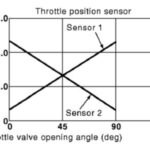For car enthusiasts and everyday drivers alike, understanding your vehicle’s performance is key to ensuring its longevity and optimizing its operation. Modern cars are complex machines, but thankfully, tools like OBD2 scanners provide a window into their inner workings. If you’re particularly interested in maximizing your car’s power and efficiency, monitoring torque is crucial. This guide will help you navigate the world of OBD2 scanners and find the Best Obd2 Scanner For Torque monitoring to unleash your vehicle’s full potential.
OBD2 scanners have revolutionized vehicle diagnostics. Connecting to your car’s onboard computer via the OBD2 port, these devices can read a wealth of real-time data, from engine temperature and speed to more intricate metrics like torque. Torque, the rotational force that gets your car moving, is a fundamental aspect of engine performance. Monitoring torque allows you to understand how your engine is performing under different conditions, identify potential issues, and even fine-tune your driving style for better fuel economy and power delivery.
Car Scanner ELM OBD2 app emerges as a powerful tool in this landscape. When paired with a compatible OBD2 adapter, Car Scanner transforms your smartphone into a sophisticated diagnostic and performance monitoring device. Imagine having a customizable dashboard displaying real-time torque readings, alongside other vital engine parameters. Car Scanner makes this a reality. Its user-friendly interface allows you to create personalized layouts, showcasing the gauges and charts that matter most to you, including torque output.
Beyond basic torque monitoring, Car Scanner excels in providing in-depth vehicle insights. It supports extended PIDs (Parameter IDs), allowing access to manufacturer-specific data often hidden from standard OBD2 scanners. This means you can delve deeper into your engine’s performance characteristics and potentially uncover torque-related metrics not commonly available. Furthermore, Car Scanner functions as a comprehensive scantool, capable of reading and resetting DTC (Diagnostic Trouble Codes). Understanding these codes is crucial for diagnosing engine problems that might be affecting torque delivery. The app’s extensive DTC database provides descriptions to help you interpret these codes effectively.
For those keen on optimizing their car’s health and performance, Car Scanner offers Mode 06, providing ECU self-monitoring test results. This advanced feature can assist in identifying potential issues before they escalate, contributing to preventative maintenance and potentially maintaining optimal torque output by ensuring all engine components are functioning correctly. The app also helps you check your car’s readiness for emission tests, an indirect indicator of engine health which can impact performance metrics like torque.
Choosing the best OBD2 scanner for torque involves considering the adapter as well as the software. Car Scanner is compatible with OBD2 adapters that use Wi-Fi or Bluetooth 4.0 (Bluetooth LE). While the app itself offers a wide array of features for free, it’s essential to use a reliable OBD2 adapter to ensure accurate data and a stable connection. The developers of Car Scanner recommend brands like Kiwi 3, Viecar, V-Gate, Carista, LELink, and Veepeak. It’s worth noting that while cheaper Chinese OBD2 ELM327 adapters might work, they can sometimes be unreliable and even cause connection issues.
In conclusion, if you’re searching for the best OBD2 scanner for torque monitoring, the combination of a reliable OBD2 adapter and the Car Scanner ELM OBD2 app is a compelling solution. Car Scanner’s extensive feature set, customizable dashboards, and in-depth diagnostic capabilities provide the tools you need to understand and optimize your car’s performance, including torque. Whether you’re a seasoned car enthusiast or simply want to stay informed about your vehicle’s health, Car Scanner offers a powerful and accessible way to unlock your car’s performance potential.

